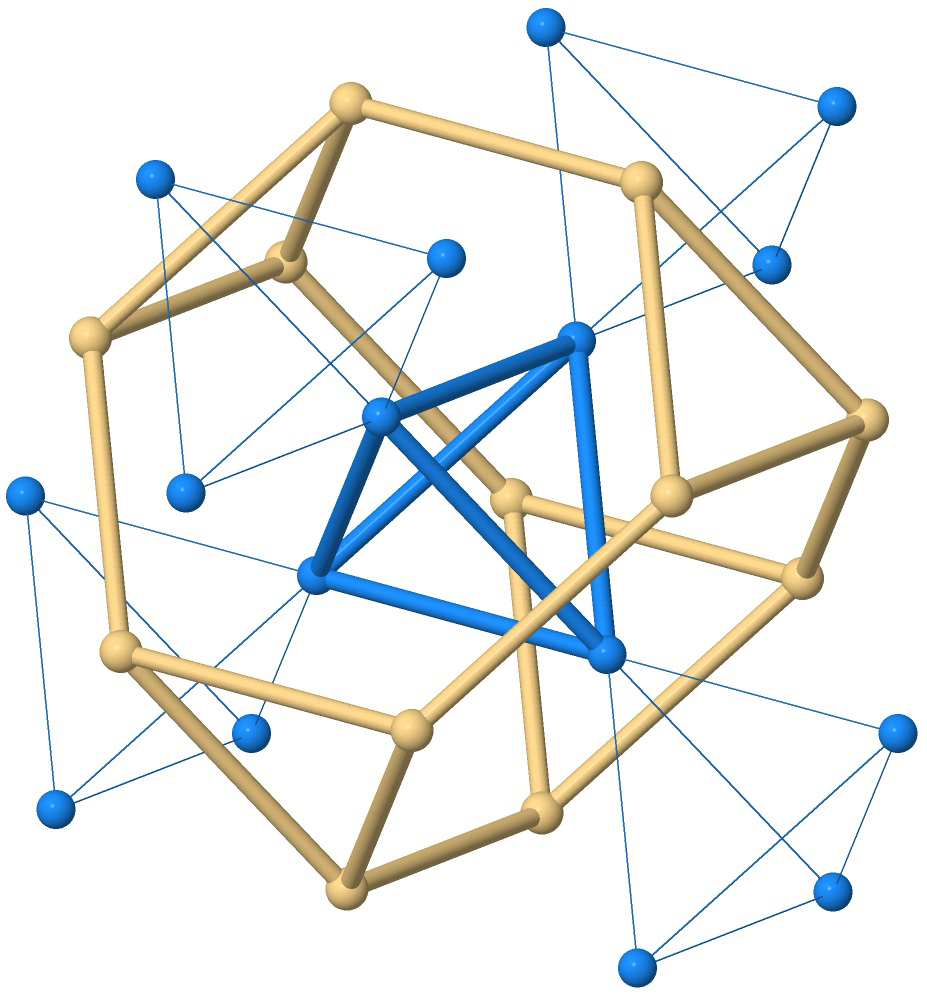Ten years ago, a student in an undergraduate physics course would likely learn electron behavior in three basic material types: conductors, insulators, and semiconductors. But about five years ago, an exciting newcomer hit the physics spotlight – topological insulators. Topological insulators act like insulators on the interior, but conduct on the surface. To better understand these unique materials, an international team of researchers carried out experiments at the U.S. Department of Energy’s Advanced Photon Source (APS), seeking answers to questions such as: Which compounds can exhibit topological states? And, what, exactly, are the necessary conditions? A better understanding of the electron interactions that lead to topological states may help advance spintronics devices and practical quantum computing. Perhaps more importantly, studies like these give scientists another puzzle piece to a phenomenon many regard as one of the most exciting physics developments of this decade.
Unlike most materials, which are insulators or conductors through and through, topological insulators conduct only on the surface. These materials behave as if there is a strong magnetic field holding otherwise conducting electrons in place on the inside whose influence breaks up at the edges. Except there is no external magnetic field—the effect comes about from interactions between electrons’ orbital movements around the nucleus and their spin. It’s a little like a waltz. If electron spins match up just right with their orbital motion, they can “dance” around the outside, while electrons in the middle only spin and never move around.
To probe electron behavior, the researchers from IFW Dresden (Germany), the University of Toronto (Canada), Seoul National University (South Korea), the Max-Planck-Institut für Physik komplexer Systeme (Germany), the Joint Institute for Nuclear Research (Russia), POSTECH (South Korea), Argonne National Laboratory, and the Technical University Dresden (Germany) utilized X-ray Science Division (XSD) x-ray beamline 9-ID at the Argonne APS, an Office of Science user facility. (Supplementary high-resolution measurements using the MERIX spectrometer were carried out on XSD beamline 30-ID-B). The research team employed the inelastic x-ray scattering technique, in which energy in the form of an x-ray photon kicks an electron up to a higher energy level, leaving a lower-level hole. A nearby electron falls down to fill the hole, and releases its own photon. By carefully recording the energy of the photons going into a material, and the energy of the photons coming out, researchers can develop an understanding of how the material’s electrons are arranged.
The team studied how electrons in compounds that may form topological insulators fill their energy levels, and how these energy levels change as key elements change. Here the investigated compounds were of the form A2Ir2O7, where A can be any of the lanthanide metal elements samarium (Sm), europium (Eu), lutetium (Lu), or transition metal yttrium (Y; Ir is iridium and O is oxygen.)
Topological states had been predicted in these compounds, but whether the materials actually exhibit the unique conducting behavior was unclear. In these materials, the strength of spin-orbit interactions matches up well with that of the electron-electron interactions. The former give rise to topological states, while the latter are detrimental to them. It is a competition, and it was felt that the outcome hinges on distortions around small groups of atoms.
In A2Ir2O7 compounds, the A atoms frame a hexagonal ring around each IrO6 octahedron. Above and below are three additional IrO6 octahedra (see the first figure). Theory predicted that jostling and distortions of and among the O6 ligand cages would determine topological phase behavior in such A2Ir2O7 materials. Instead, the X-ray measurements and electronic-structure calculations showed that the influence from interactions across the extended three-dimensional networks of both A and Ir sites is much stronger (see the second figure). It turns out that local ligand distortions don’t matter nearly as much as longer-range low-symmetry fields.
These results are not just relevant for the few compounds investigated here. The authors suggest that researchers may have underestimated longer-range electrostatics in numerous transition-metal series compounds. Failure to accurately predict topological states indicates that we do not yet fully understand them. Work such as this draws us closer to understanding and exploiting this exciting new topological state of matter.— Jenny Morber
See: L. Hozoi1*, H. Gretarsson2, J.P. Clancy2, B.-G. Jeon3, B. Lee3, K.H. Kim3, V. Yushankhai4,5, Peter Fulde4,6, D. Casa7, T. Gog7, Jungho Kim7, A.H. Said7, M.H. Upton7, Young-June Kim2, and Jeroen van den Brink1,8, “Longer-range lattice anisotropy strongly competing with spin-orbit interactions in pyrochlore iridates,” Phys. Rev. B 89, 115111 (2014). DOI: 10.1103/PhysRevB.89.115111
Author affiliations: 1IFW Dresden, 2University of Toronto, 3Seoul National University, 4Max-Planck-Institut für Physik komplexer Systeme, 5Joint Institute for Nuclear Research, 6POSTECH, 7Argonne National Laboratory, 8Technical University Dresden
Correspondence: * [email protected]
Research at the University of Toronto was supported by the Natural Sciences and Engineering Research Council of Canada, the Canada Foundation for Innovation, and the Organic Materials Review Institute. Work at Seoul National University was supported by the National CRI (2010-0018300) program. L.H. acknowledges financial support from the German Research Foundation (Deutsche Forschungsgemeinschaft, DFG). This research used resources of the Advanced Photon Source, a U.S. Department of Energy Office of Science User Facility operated for the DOE Office of Science by Argonne National Laboratory under Contract No. DE-AC02-06CH11357.
Argonne National Laboratory is supported by the Office of Science of the U.S. Department of Energy. The Office of Science is the single largest supporter of basic research in the physical sciences in the United States, and is working to address some of the most pressing challenges of our time. For more information, please visit science.energy.gov.

